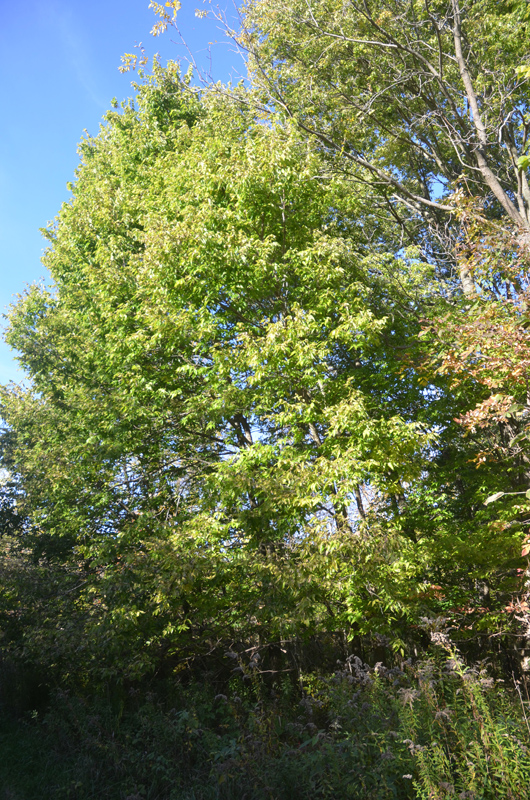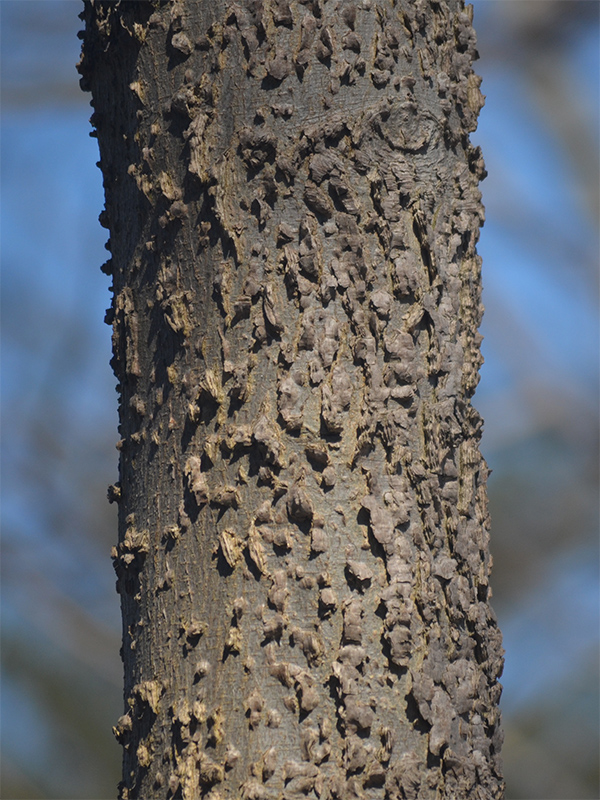
Woody > Celtis > Celtis occidentalis > Celtis occidentalis
Celtis occidentalis
Common Hackberry
Origin: Quebec to Manitoba, south to North Carolina, Alabama, Georgia and Oklahoma.
| Family |
| Cannabaceae (Ulmaceae) |
| Genus |
| Celtis |
| Species |
| occidentalis |
| Category |
| Woody |
| Type |
| Tree (deciduous) |
| Pronunciation |
| USDA Hardiness Zone |
| 3 - 9 |
| Canadian Hardiness Zone |
| 2 |
| RHS Hardiness Zone |
| H7 |
| Temperature (°C) |
| -40 |
| Temperature (°F) |
| -40 |
| Height |
| 20 m |
| Spread |
| 15 m |
Photographs
Description and Growing Information
Flowering Period
| General Description |
| A native North American tree with cork like bark that is very urban tolerant. |
| Landscape |
| City and courtyard gardens, urban landscapes, parks, streets, informal gardens, mass plantings, large properties, cottages or as a specimen. |
| Cultivation |
| Prefers rich, moist soil but grows in dry, heavy, sandy and rocky soils. Tolerates wind, full sun, dry and alkaline soil conditions. |
| Shape |
| Fine branch habit with a broad top with ascending arching branches. |
| Growth |
| Fast |
| Pests |
| Witches broom, leaf spots, powdery mildew. The leaves are prone in our Ontario environment to severe infestations of leaf galls. |
| Habitat |
| Flood plains, along roadsides, open fields and fence rows. |
| Bark/Stem Description |
| Grey in colour with corky warts or ridges. |
| Flower/Leaf Bud Description |
| Small imbricate buds, 5 mm long, chestnut brown, ovate with sharp point. |
| Leaf Description |
| Alternate, simple, ovate leaves around 5 - 12.5 cm long. |
| Flower Description |
| Polygamo-monoecious staminate flowers. |
| Fruit Description |
| Fleshy yellow fruit, borne on a 2.5 - 5 cm long pedicel that ripens in September. |
| Colour Description |
| Dull green in summer turning yellow-green in autumn; not impressive. |
| Texture Description |
| Medium-coarse. |
| Notable Specimens |
| Weldon Library, University of Western Ontario, London, Ontario, Canada. Joany's Woods, West Williams, Middlesex County, Ontario, Canada. |
| Propagation |
| Seed. |


